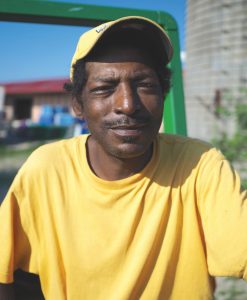Review of: “Farming While Black”
“Farming While Black: Soul Fire Farm’s Practical Guide to Liberation on the Land,” is a story about the extraordinary life of Leah Penniman and Soul Fire Farm. This book is written as equal parts practical farming instruction and spiritual reflection of the mind, body, spirit and the land.
I find our main character, Leah Penniman – a Black Kreyol woman drawing back to her roots through the land and her many ancestors – to be more than a hero to her community. She is also a champion of justice, a seeker of opportunities and a leader connecting people of color back to the spirit of the land.
This book woke my spirit of land stewardship. Leah showed me things I thought I have seen before, but through new eyes. This book is a good read – but it is also a good step-by-step primer of when and what to do, and how to do it. The 16 chapters include:
 Finding Land and Resources
Finding Land and Resources- Planning Your Farm Business
- Honoring the Spirits of the Land
- Restoring Degraded Land
- Feeding the Soil
- Crop Planting
- Tools and Technology
- Seedkeeping
- Raising Animals
- Plant Medicine
- Urban Farming
- Cooking and Preserving
- Youth on the Land
- Healing from Trauma
- Movement Building
- White People Uprooting Racism
But don’t skip the uplifts! They are the light in the enlightenment, behind-the-scenes pieces going more in-depth about our farming culture.
“Farming While Black” was gifted to me at the beginning of my fifth season farming by my dear friend Carmen Black, the owner of Sundog Farm. Sundog Farm is a diversified farm near Solon that grows 50 kinds of vegetables, including over 200 varieties, across four seasons and also raises sheep. Carmen operates a 200-family CSA with her sister Maja and three farmhands.
What really sold me on this book is one day when I was reading the part where they mulched the garlic field at Soul Fire Farm in its first season. I was cut short and didn’t finish the paragraph because we were off to our own garlic field to rake up the mulch after the winter and get it out of the field. Still in my first row, I started to think about how, if we kept the mulch down, it would suppress the weeds.
Carmen told me the mulch had to go or we would have troubles later on this spring. When I got back to reading, I finished the paragraph where Leah explains that the mulch brought nettles. Right then, I realized that our farming practices were the same.
I know I’ll read parts of this book over and over again, using it as a training and reference guide. It is a worthwhile read for experienced and inexperienced farmers alike.
Carlos Williams has been farming at Sundog Farm near Solon, Iowa, for the past seven years. His current roles on the farm include soil maintenance engineer, pest and disease management and keeper of the high tunnels. His favorite vegetable to harvest and also eat is collard greens.
